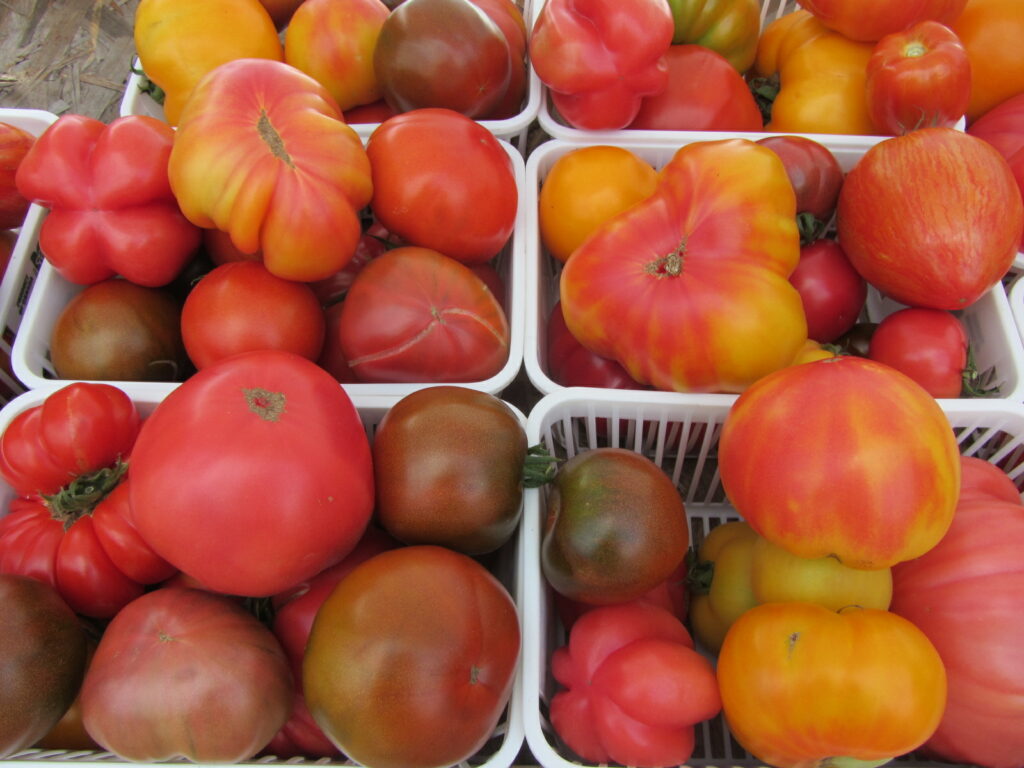
You too can grow great tomatoes! This article will give insight into unique varieties and how to grow ‘love apples’ that are perfect and flavourful.
Grow a Rainbow – some common and some unique varieties
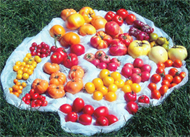
There are thousands of varieties of tomatoes in all shapes and many colours, but garden centres typically carry only more standard selections. Popular varieties include; ‘Bush Beefsteak’, ‘Early Girl’, ‘Better Boy’, ‘Roma Paste’, ‘Big Beef’, and ‘Sweet Millions’. Those wishing for a different taste might look for seeds to plant unusual varieties like ‘Health Kick’, ‘Sun Sugar Hybrid’, ‘Mountain Gold’, ‘Hawaiian Pineapple’ or ‘Yellow Stuffer’.
What to Buy – Determinate vs Indeterminate types, Disease resistance
For cultivation, tomatoes are categorized into determinate and indeterminate types, and hybrid and non-hybrid varieties. Determinates form a flower cluster and fruit at terminal growing points causing plants to be low growing. These types do not usually require heavy staking, and they ripen more quickly and all at once. Indeterminates set fruit laterally along the vine and grow taller, continually producing flowers and fruit; they need to be supported or caged. A hybrid is the result of cross-breeding two or more varieties, while a non-hybrid is the true variety.
Determinate tomatoes
Among fast-maturing varieties that start ripening about 60 days after transplanting, egg-shaped ‘Siberian’ sets a high standard for flavor, which is similar in many respects to Canadian-bred ‘Beaverlodge’. Both are knee-high salad tomatoes, while the fruits of round ‘Glacier’ and ‘Sophie’s Choice’ are large enough to slice and dry, or to preserve as tangy tomato sauce. Bred to bear in Idaho’s short summers, beautiful orange ‘Ida Gold’, is early, easy, productive, and tastes great.
Cherry tomatoes are well-represented among early determinate tomatoes, and a novel new yellow-gold bush cherry, ‘Patio Choice Yellow’, has been named as a 2017 All America Selections winner. Similar to the popular ‘Tumbling Tom Yellow’, ‘Patio Choice Yellow’ matures into a 2-foot mound of sweet golden cherry tomatoes when staked, or it can be grown in a hanging basket.
Grow Great Tomatoes – Delicious Determinate Tomato Varieties
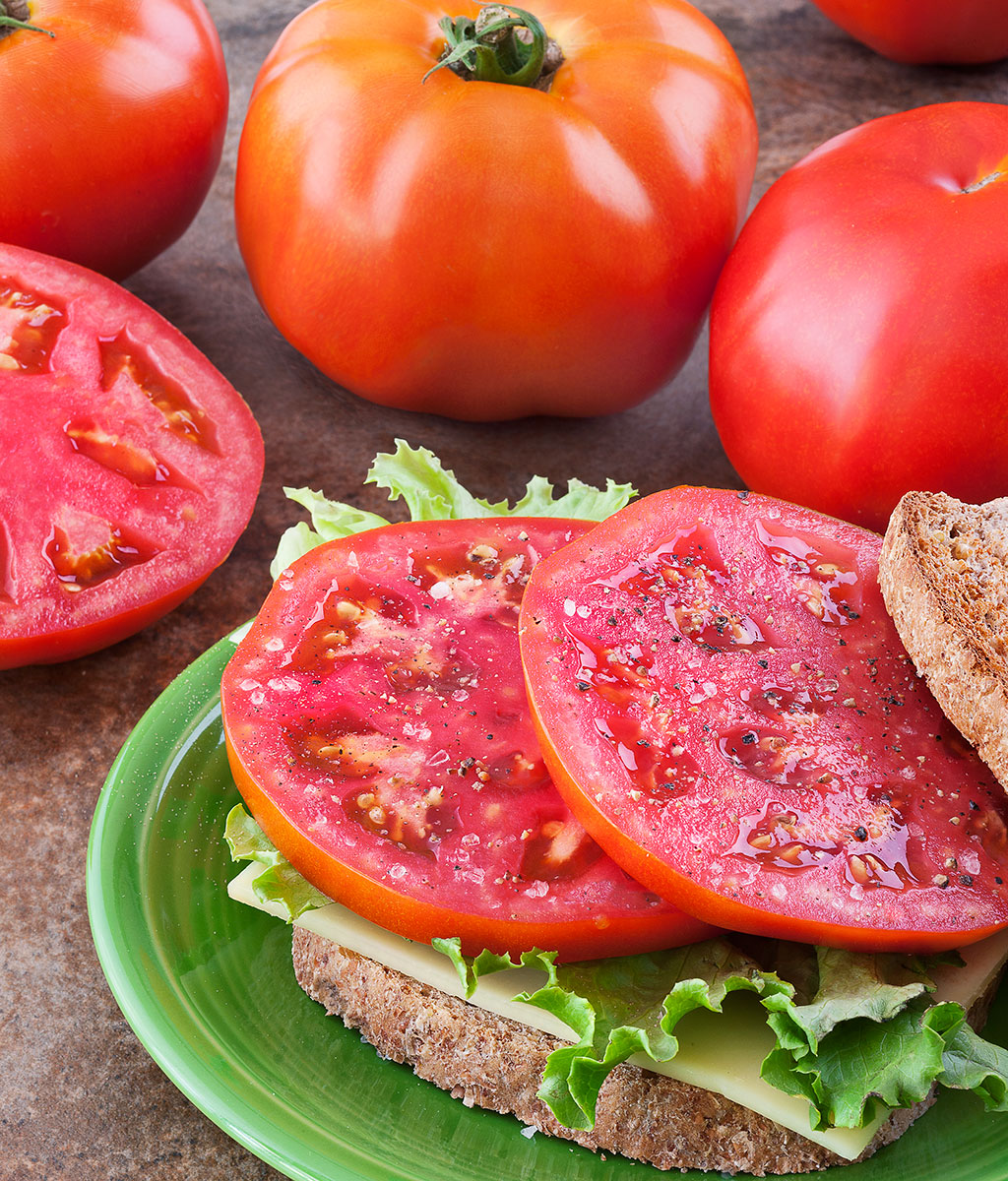
Amelia
Not all determinate tomatoes are extra earlies, and full-season varieties rated at 75 to 80 days to maturity offer easy-to-manage harvests from big, robust bushes. Purple-blushed ‘Black Sea Man’ is a delicious Russian heirloom with potato-leaf foliage that grows to 4 feet (1.2 m) or more. Another contender is Oregon-bred ‘Santiam’, which will set nearly seedless fruits even under stressful conditions. In hot summer areas where disease pressure is relentless, determinate ‘Amelia’ provides rare resistance to Tomato Spotted Wilt Virus, and its red fruits ripen ahead of summer’s worst insects.
Space-saving and dependable, determinate tomatoes can be an essential component in a well-balanced tomato planting plan.
There are many plants and seeds bred and sold as disease-resistant. Look for varieties that have VF, N, or T in their descriptions. These letters reflect a tolerance or resistance to soil-borne diseases, nematodes, and some viruses.
How to Grow Great Tomatoes
Transplant seedlings when the soil is warm and after the last suggested frost date in your area. You can plant earlier, to get tomatoes sooner, or if you have a short season, by using water bags, floating row covers, or ventilated cloches. Choose a cloudy day for planting so the heat will not stress out the tiny plants.
Prepare the soil with deep cultivation and a generous supply of compost, and use a transplant fertilizer (5-15-5) when moving seedlings to the garden. A black or red plastic mulch, to suppress weeds and retain moisture, can be set out one week prior to transplanting. Plant seedlings deep and up to their first set of leaves, removing the lower leaves after transplanting. Lightly encircle the bottom inch of your seedlings with plastic wrap to guard against the dreaded cutworms.
Seedlings need to be protected from wind and planted in an area that receives six to eight hours of full sun. Water the plants deeply and regularly, and carefully weed so tomatoes do not have to compete. Fertilize, when the first flowers appear, with an even solution (20-20-20), repeating every three weeks until the tomatoes are ripe. Invest in solid cages or construct devices to train plants to remain off the ground.
Tomato problems can best be avoided by purchasing disease-resistant plants and seeds. Other methods to help guard against bugs and diseases include sowing companion crops like marigolds, basil, and dill among your tomatoes to deter tomato hornworms and other bad bugs; evenly watering your plants, and rotating crops annually to combat soil diseases. The most common tomato problems, like cat-facing (misshapen, scarred fruit), blossom end rot, scald, and stress, result from uneven watering and temperature extremes. Fusarium and verticillium wilt are incurable soil-borne diseases.
The Health benefits of eating tomatoes are legion. The fruits contain the disease-fighting compound lycopene, which medical reports indicate is good protection against some forms of cancer and heart disease. Tomatoes are also a good source of Vitamins A and C, potassium, iron, fibre, and beta carotene.
What about Heirloom?
There are few more satisfying moments for a vegetable gardener than enjoying the taste of an unusual and historically significant heirloom tomato.
Heirlooms are simply defined as those cultivated prior to 1940, a date recognized as the first official year of hybrid stock. Purists maintain that many varieties prior to this date may be ‘commercial heirlooms’ and accept the only true heirlooms as those passed down from generation to generation by the same family, group, or country. There are thousands of these varieties listed in the Seed Savers Exchange and the biggest challenge to a gardener may be limiting selections to fit the garden.
Heirloom tomatoes do not differ in their cultivation and care from hybrid stock. Few have natural disease resistance and their yield is often less plentiful than hybrid varieties. Most nurseries do not stock heirloom tomato plants, as many in the general gardening population resist the urge to purchase any unusual coloured varieties, deciding instead to select a traditional ‘safe’ variety.
Gardeners, like our ancestors, wishing to cultivate these ancient varieties, are chiefly relegated to growing them from seed.
Recommended heirloom varieties:
‘Hillbilly’, a very large sweet bicolor: from West Virginia weighing one to two pounds. The colour of this variety is yellow-orange with red streaks.
‘Purple Russian’ is a Ukrainian purple to black having oblong fruit. Rich flavour, good producer, and three to four inches in length.
‘Aussie’, a down-under huge flavourful red beefsteak with most fruits over one pound.
‘Rose de Berne’, a very productive dark pink Swiss tomato with six- to eight-ounce fruit the size of tennis balls.
‘Costoluto Genovese’, a popular heavy producing red full-flavoured Italian variety.
‘Hungarian Heart’ is a meaty productive red oxheart with few seeds and one-pound fruit.
‘Druzba’, a Bulgarian late-season red with four- to six-ounce blemish-free fruit.
‘Sioux’, American deep-red with rich extraordinary taste. Harvest numbers are plentiful with fruit size approaching six ounces.
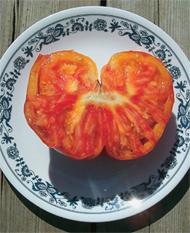
Big Rainbow
‘Big Rainbow’, a German bicolour with a stunning array of red and gold interior mottling. Yield is moderate with one- to two-pound fruit.
‘Green Zebra Stripe’ is one of the most unusual tomatoes to cultivate. It is fully ripe when the outer skin has yellow lines tracing down its green shoulders. Interior flesh is green, fruit is tangy, tennis-ball-sized, and very productive.
‘Kellogg’s Breakfast’, is a high-yielding American heirloom that is one of the best-tasting yellow varieties. One-pound fruits have a rich explosive taste.
Heirloom tomato seeds and plants should have a warning attached for the adventurous gardener; “Beware all who select this heirloom tomato variety, you may never return to cultivating a regular variety again!”
Cultivating tomatoes in the short season
Canadian gardeners in the shortest season regions have often felt cheated that they were unable to grow tomatoes like their warmer-zoned cousins. There is no reason that a shorter growing season should impede anyone from having a successful tomato crop if tomato aficionados follow simple cultivation guidelines.
1. Construct 8- to 16-inch raised beds for your vegetable gardens. These tend to drain earlier than regular beds permitting gardeners to till the soil much earlier.
2. Grow plants from seed. This practice permits gardeners to obtain a good head start on crops and larger seedlings to transplant.
3. Use plastic mulch in the tomato planting area. The plastic will help warm soil quicker, retain moisture and keep the weeds at bay.
4. Begin the practice of using water bags or Kozy-Coats (invented by Mr. Tomato, and available for retail purchase across Canada) around your freshly planted seedlings. These bags permit gardeners to transplant seedlings more than a month before the last frost date. The bags should be filled and permitted to sit on the encircled area, where the seedlings are to be planted, for at least one week prior to transplanting. This permits the water to heat up and provide good protection for the young plants. Tomato plants do not have to be hardened off if you use these bags, which can be made smaller at the top when there is a danger of heavy frost

5. Other plastic tunnels, plastic, and glass ventilating cloches, mini greenhouses, plastic wraps, and man-made items can be used to be almost as effective as the water bags.
6. Intersperse your selection with hardy heirloom and early maturing varieties. Some early variety suggestions include:
- ‘Matina’ is a productive German red heirloom with smaller two- to four-ounce fruit. An outstanding flavourful variety that continues to bear all season.
- ‘Red Rocket’a bushy, tasty red loaded with eight- to ten-ounce fruit.
- ‘Prairie Fire’ has red, golf-ball-sized fruit on short bushy plants.
- Silvery Fir Tree’ is an unusual Russian heirloom with delicate leaves that have a silvery sheen. Flavourful tennis-ball-sized red fruit.
- ‘First Lady’ VFNT hybrid, an early tasty red on productive, disease-resistant plants.
for more information about these varieties check out this listing at Rutgers
Short-season gardeners following the above guidelines and basic cultivation instructions should be able to cultivate any tomato grown in a warmer zone.
To Grow Great Tomatoes, Get The Buzz about Tomato Pollination
About Tomatoes – the “apple of love”
Tomatoes are the most widely cultivated culinary plant in North American home gardens.
They probably originated in Peru and made their way northward through Central America to North America. They were introduced to Europe in the 16th century and were soon adapted to Spanish and Italian cookery. They were widely consumed in Southern Europe and regarded as an aphrodisiac, as the French name suggests: ‘pomme d’amour’ or ‘apple of love’.
In Northern Europe, tomatoes were regarded as ornamentals up until the 1800s. It was believed that they were poisonous, and, in fact, the leaves and stems are toxic. As well, the wealthy may have fallen ill after eating tomatoes served on pewter plates; the acid in tomatoes would cause lead to leach out into the food causing poisoning and even death. Poorer folk, eating from wooden plates, fared better.
Legend has it an American Colonel, Robert Johnson, boasted he would eat an entire basket of the dangerously regarded fruit. The event purportedly occurred in 1820 in Salem County, New Jersey. Hundreds appeared to watch his demise but were stunned when he lived to help promote tomato acceptance. This activity by Johnson may have been the first pre-television Fear Factor episode! (The legend of Robert Johnson has never been substantiated by contemporary documentation. In fact, the first time the story appears in print, according to food historian Andrew F. Smith, is some 86 years after it was supposed to have happened.)
Tomato Diseases
What Disease is Destroying my Tomatoes?
Urban Growing Concerns – Potatoes and Tomatoes
Tomato Recipes
More gorgeous tomatoes to try



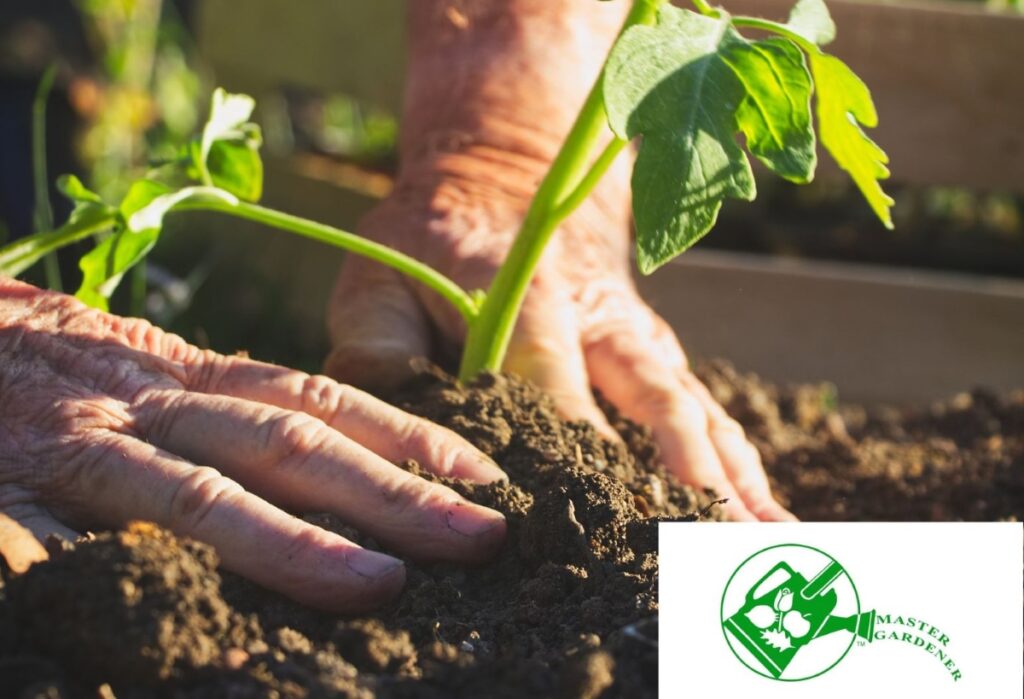


About The Author: Ron Rossini
Ron's been a gardening resource in the London area for years; writing for local publications, doing radio segments, giving talks and advice for more than 15 years as an active master gardener and growing as many as 80 varieties of tomatoes.
More posts by Ron Rossini